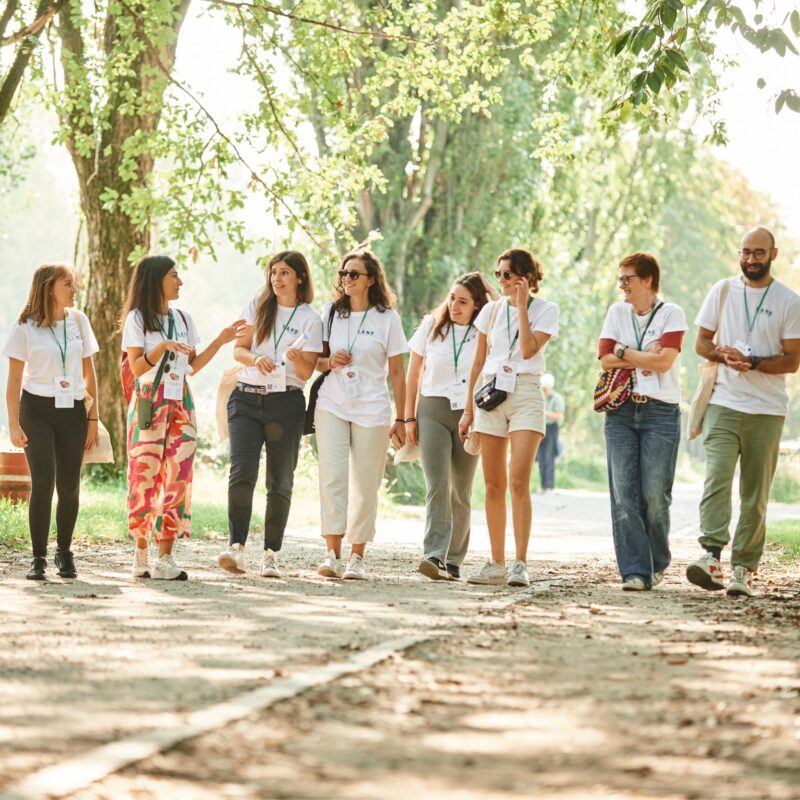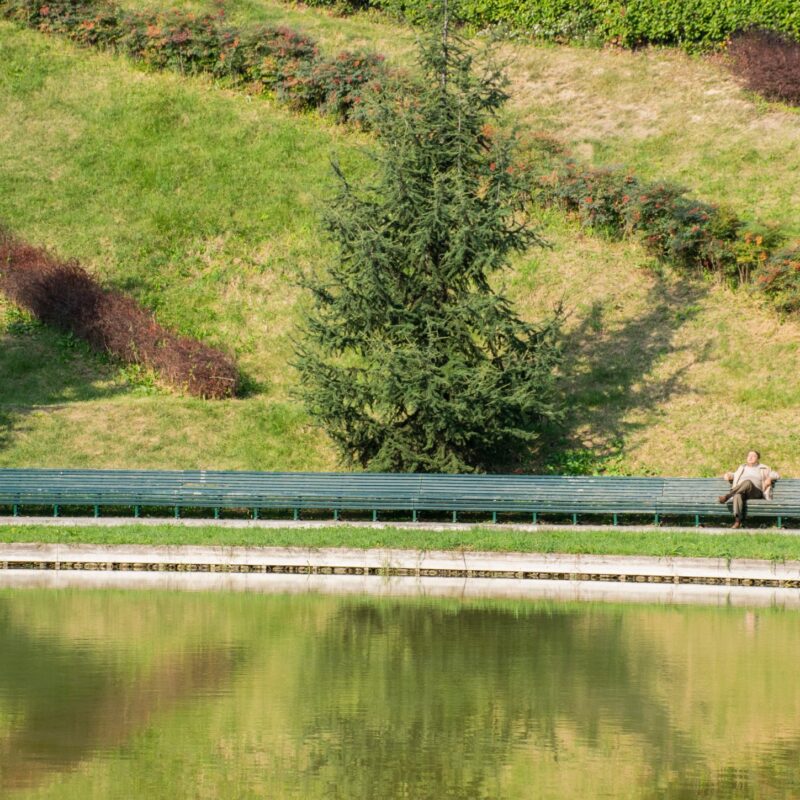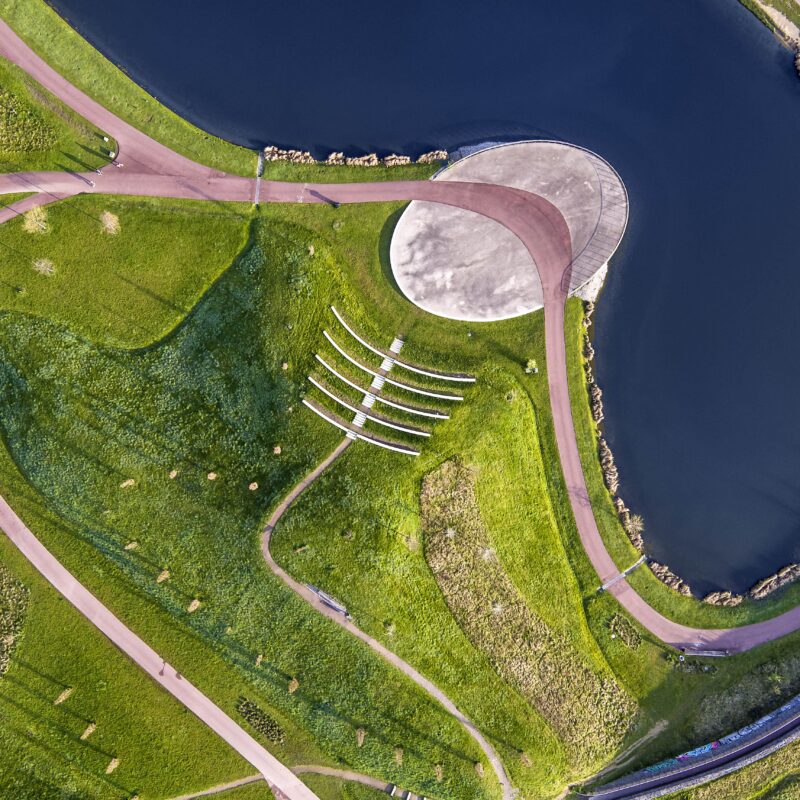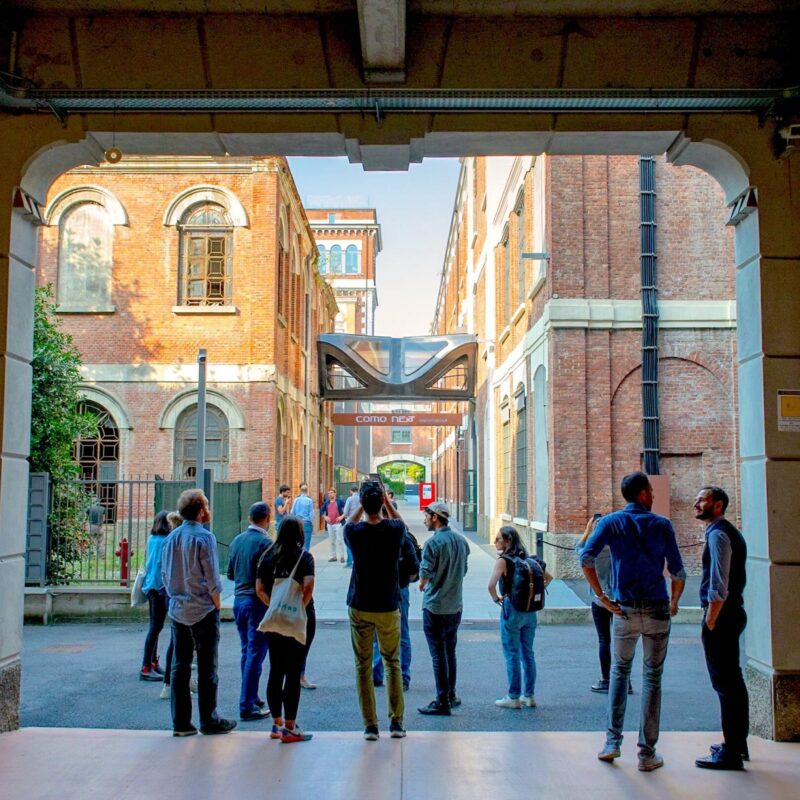
Newsletter #11: From Protection to Action
As we embrace autumn, some ideas on how this season of transition mirrors the shifts we need in landscape architecture. Nature is always evolving, and so must we. It's time to move beyond passive protection and actively design with resilience in mind: Nature-Positive Landscapes.
As we step into autumn, I find myself reflecting on its unique qualities and what it means for the landscapes around us. Autumn is a time of transition—nature shifts gears, preparing for the quieter, restorative months ahead. It is the perfect moment to rethink how we design with nature, how we can take active steps to protect and enhance biodiversity, and how we can continue to find the balance between development and conservation. However, as we admire the changing seasons, we must also acknowledge that many of our habits may need to shift in the face of a rapidly changing world. Climate change is altering the rhythms we are accustomed to, and we must prepare for tomorrow’s world, which will be marked by powerful natural phenomena and unforeseen challenges.

How Cities Transform into Urban Landscapes: From Nature-Positive Cities to Nature-Positive Landscapes, ETH Zurich
Transforming Urban Landscapes
In my recent lecture at ETH Zürich I ETH RAUM – The New Platform for Sustainable Spatial Development, titled “How Cities Transform into Urban Landscapes: From Nature-Positive Cities to Nature-Positive Landscapes”, I discussed how landscape architecture plays a pivotal role in addressing the climate crisis. Passive protection of nature is no longer enough. We need to take action. A well-thought-out project can do much to preserve biodiversity while also finding a compromise between new infrastructure demands and the pressing need to combat climate change.
One of the key ideas I shared is that landscape architecture can no longer be about creating aesthetically pleasing green spaces alone. We must take responsibility for the spaces we shape—both for ourselves and society. But to truly embrace this responsibility, we must also disrupt familiar patterns: the future demands innovation, courage, and new perspectives.
- Beyond Built Spaces: The real question is how to create ecologically oriented urban planning beyond buildings and infrastructure. How do we tap into the potential of undeveloped spaces? Our future depends on the harmonious interplay between what is built and what remains natural. In addition, this future will be shaped by new and unpredictable challenges—natural disasters, global conflicts, migration flows, and resource shortages. Navigating these disruptions requires a collective approach, shared know-how, and honest communication across sectors and borders.
- Nature as Capital: Every small step counts. In landscape architecture, each decision adds to our shared environmental account. Nature should be seen as capital with real economic value, and sustainability must become something we can see and measure in our designs.
- Collaborative Action: It is vital to create new cooperation formats and find practical solutions to complex problems. By working with governments, civil society, and urban planners, we can bring informal ideas into formal planning processes that drive meaningful change.

Stakeholder Workshop for the Landscape Planning in the Geeste Lowland, Cuxhaven
Learning from the ASLA Climate Action Plan
I have been particularly inspired by the American Society of Landscape Architects (ASLA) Climate Action Plan, translating the International Federation of Landscape Architects (IFLA) Climate Action Commitment, and how it positions landscape architects as leaders in designing climate-resilient communities. Because we work so closely with land and water, we are uniquely positioned to implement nature-based solutions—from stormwater management to biodiversity conservation—that make cities more resilient to extreme weather, more equitable, and healthier for people. This Plan highlights how landscapes can cool city centres, absorb greenhouse gases, and safely manage floodwaters, all while providing recreational opportunities and storing more carbon than they emit.
It is an excellent example of how industry leaders can take initiative, and it would be good to see a similar action plan in Europe, too, so we are going beyond commitment. We can learn from our American colleagues and enhance our collective response to the climate crisis thanks to a cross-continental dialogue, while also drawing on lessons from the Middle East, where we continue to expand our impact. Learning from Riyadh, for instance, provides invaluable insights into designing landscapes that respond to extreme conditions, helping cities become more resilient with innovative approaches to urban development.
For more on ASLA’s initiative, click here.

Working session at LANDconnects 2024 in Buccinasco, Milan
LANDconnects 2024: Strengthening Global Bonds
LANDconnects 2024 – our annual LAND meeting – was another reminder of the power of collaboration. Bringing together our global team in Milan was an enriching experience, where we exchanged ideas, explored new possibilities, and built stronger relationships.
- Collaborating Across Boundaries: The connections we made during LANDconnects—whether in structured group activities, casual conversations or at dinner—showed the importance of working together towards shared goals. Our team is spread across different parts of the world, and this event allowed us to deepen our understanding of one another’s unique challenges and contexts. In a world facing increasingly interconnected crises, working across boundaries has never been more essential.
- Cultivating a Shared Future: At LAND, cultivating goes beyond designing landscapes—it involves nurturing relationships and ideas. This event provided fertile ground for our future growth as a team and an organisation. The bonds we strengthened, and the seeds of collaboration we planted will allow us to achieve our objectives.
- Embracing ESG for a Relational Economy: As we look to the future, Environmental, Social, and Governance (ESG) principles offer a clear path to building sustainable landscapes and relationships. They provide a framework to ensure that our projects generate long-term value for society and the environment. However, the ESG mindset not only offers a path but also builds bridges: taking our commitment to sustainable development one step further can allow us, in turn, to help our clients prioritize ESG criteria in their decisions and harness the potential of their natural capital for a greener future. What is more, by integrating this approach into our core practices, we can harness the diversity that defines LAND. Our global team’s wide range of cultural perspectives, expertise, and local knowledge strengthens our ability to respond to complex environmental and social challenges. This intrinsic diversity will be crucial as we move toward a relational economy that prioritizes meaningful connections between people, nature, and communities.
By collaborating globally and acting locally, we can design landscapes that actively protect and enhance our natural environments, creating spaces where people and nature can coexist and thrive.

Speaking about Landscape transformation in Turin
The vibrant colours, crisp air, and changing light of autumn all remind us that landscapes are dynamic and constantly evolving. This is a crucial lesson for us as landscape architects, as we experienced last week during our visit at Parco Del Valentino in Turin with Torino Urban Lab, where we explored how barrier removal and an increased connectivity of this historic landmark can bring the city closer to becoming nature-positive.
Please take a moment to appreciate the season’s beauty and reflect on how it influences the landscapes around us. Autumn brings rituals that remind me of nature’s rhythms—like putting a chestnut in my pocket for good luck and warmth as the days grow colder. Yet, as climate change disrupts many of the patterns we’ve long taken for granted, we must be open to changing our habits to secure a livable future. Dealing with this transition will be the challenge of the new generation. That is why we need shared know-how, open and honest communication, a lot of energy and market understanding to be able to help shape the change processes.
Do you have any autumn traditions or rituals that help you stay connected to nature during this time of year? I’d be delighted to hear about them. Let’s continue to share our unique experiences, stories, and ways to reconnect with the natural world, not only through our work but in our everyday lives.
Together, we can keep building landscapes that inspire and encourage, just as the changing seasons do.









